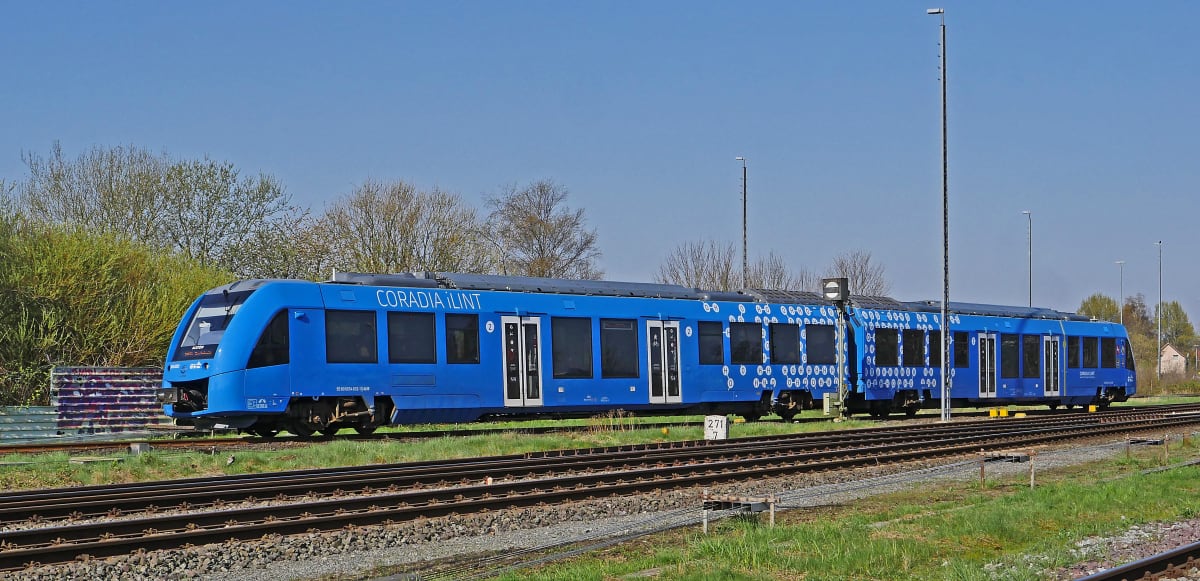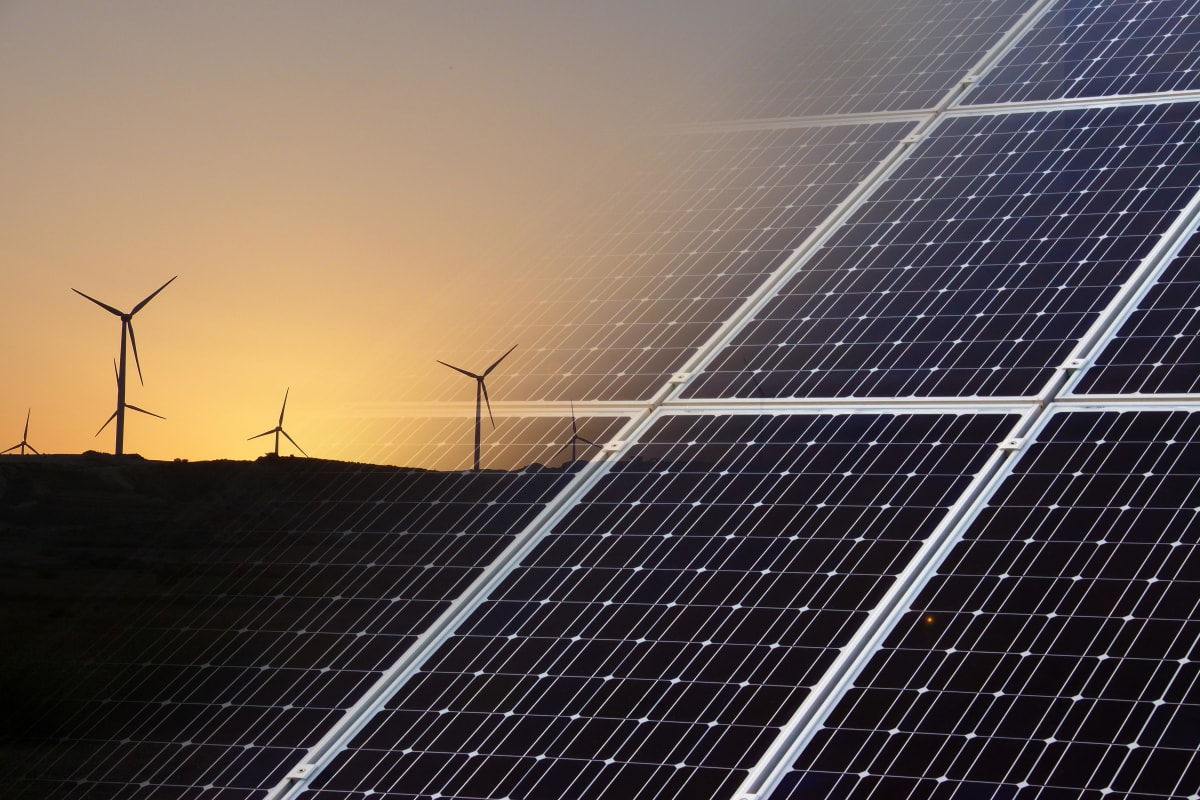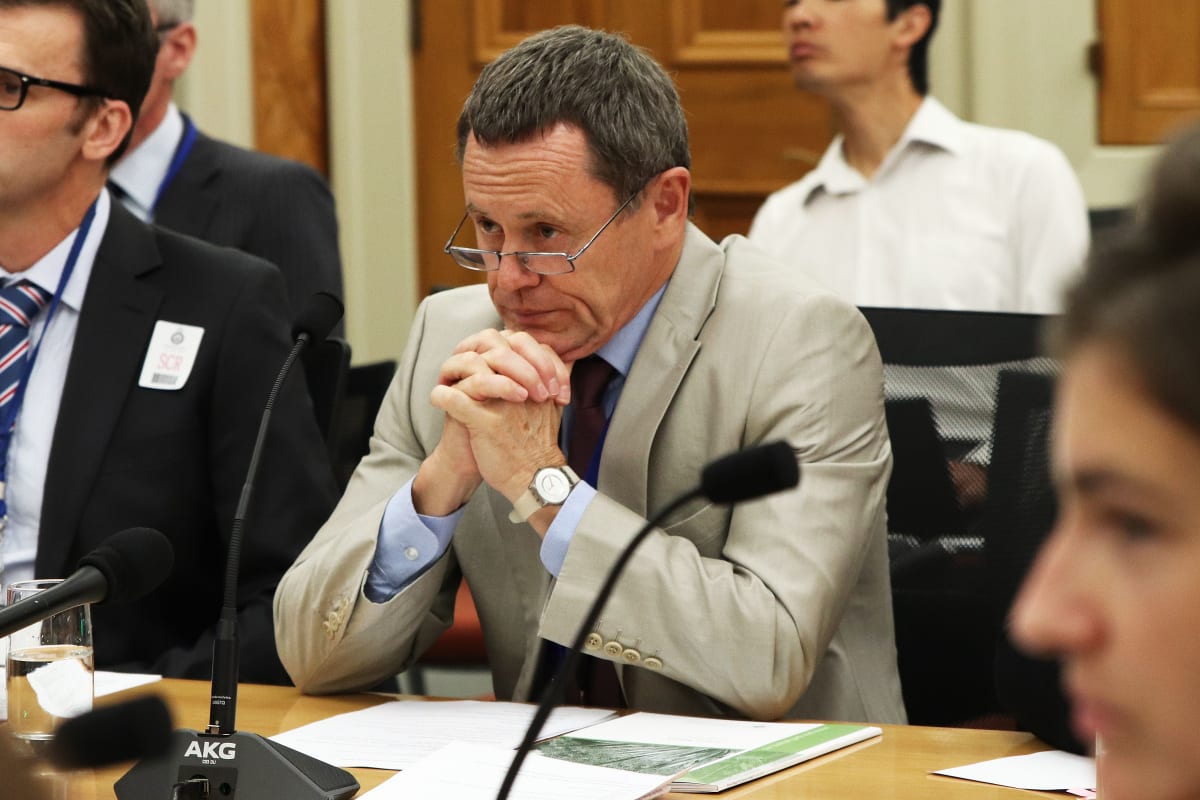
In 2050, New Zealanders won't be cooking with green hydrogen and the gas will only meet 8 percent of the country's energy demand, Marc Daalder reports in the first of two pieces on our future energy system
Analysis: A new report commissioned by the Government says New Zealand has an opportunity to export green hydrogen but puts a damper on hopes that the gas could be used to heat Kiwi homes as part of a zero carbon economy.
The analysis comes after Parliamentary Commissioner for the Environment Simon Upton wrote a letter to senior ministers warning them that going all-in on hydrogen could be an expensive mistake that prevents us from meeting our climate targets.
READ PART 2:
► Tiwai smelter uncertainty ‘not good for NZ’, says energy minister
Energy consultancy firm Castalia produced the report for the Ministry of Business, Innovation and Employment ahead of the development of a hydrogen roadmap for New Zealand. The Emissions Reduction Plan released last week came with funding for that roadmap.
In its report, Castalia sought to determine potential domestic and international demand for hydrogen and didn't examine opportunities to produce hydrogen.
"We identified four sectors in New Zealand where hydrogen technology and applications of hydrogen as an energy carrier could be used: transport, energy and electricity system services, industry, and exports," the report said.
Energy Minister Megan Woods, one of the recipients of Upton's letter, said the analysis was important as the Government sought to understand how hydrogen could play a role in the low emissions transition.
"What we have to do as we go through the hydrogen roadmap is really refine what makes sense here in Aotearoa New Zealand in terms of the domestic use. A lot of the conversation to-date has been on production but we've increasingly been doing some work on demonstration demand," she said.
Hydrogen trucks
By 2050, the year New Zealand is supposed to hit net zero long-lived emissions, around 8 percent of the country's total demand for energy could be met through green hydrogen.
That's less than in North America and Europe, where other reports have estimated that between 14 and 30 percent of total energy demand could be met by hydrogen. At least some of their hydrogen, however, is likely to be produced by fossil fuels. In New Zealand, all of the hydrogen we would produce would come from renewable electricity splitting water into hydrogen and oxygen, in a process called electrolysis.
We may also use hydrogen to do fewer things than in other countries. Prior analysis has indicated hydrogen could heat buildings overseas, be burned for electricity to smooth peak demand, replace fossil fuels in industry and power vehicles.
Castalia found that there are a range of opportunities for hydrogen in New Zealand, but the surest bet is in transport. We're not likely to be driving hydrogen cars to get our groceries - electric vehicles are far more efficient for the passenger fleet - but the gas could power the trucks of the future.

"HFC-EVs [hydrogen fuel cell vehicles] could play an important role in decarbonising heavy vehicles, such as freight trucks, semi-trucks, tractor-trailers, and other off-roading vehicles. Compared with other fuels, HFC-EVs have high energy density, fast refuelling time (10-20 minutes) with a longer driving range on a single tank (1,200 km), and are more fuel-efficient on undulating terrain," the report found.
Woods agreed that electric is the future for light vehicles.
"I think that's accepted wisdom. Everybody sees that it's really the heavy fleet in New Zealand where there are opportunities," she said.
"Electrification [of the heavy fleet] is going to be really difficult, potentially. We're not a country that only has heavy trucks on State Highway 1. We go up a lot of nooks and crannies and valleys to collect milk - and they're heavy vehicles."
The minister said that the heavy fleet would likely be partly fuelled by hydrogen and partly electric.
"I don't think this is our VHS or Beta moment. We're not going to have to choose one or the other. I think the future in terms of energy is going to be a really diverse future - that there's going to be a range of different solutions that are going to be used in different contexts," she said.
"But also that Castalia report emphasises that there could be quite a niche opportunity for New Zealand in SAF - in sustainable aviation fuels from hydrogen."
While electric planes are likely to hit the market before hydrogen aviation fuel is available, they might struggle fill the long-haul travel niche.
"SAFs (either Synthetic-SAF or Bio-SAF) are likely the only non-fossil fuel solution for long-haul flights," the report found. Whether hydrogen, biofuels or another type of sustainable fuel wins out is dependent on safety, the relative costs of the fuels and improving efficiency in the hydrogen production process. Large amounts of energy are lost during the electrolysis and the subsequent distribution and storage of hydrogen fuels.
Castalia also saw a potential for hydrogen-powered rail, though this would only make sense for longer routes that have not yet been electrified.

Energy security
"The other exciting bit about hydrogen and where I think it's got such a massive part to play in our energy future is it does actually give us the demand response piece that we need in a 100 percent renewable electricity system," Woods said.
"You can turn it off and on. I guess the same way as Methanex operates within the gas market. It allows you to monetise any over-capacity of your renewables that you build to make up for the intermittency of wind and solar. I think it actually has a really important market role to play as well."
Indeed, the Castalia report did find an opportunity for hydrogen to help address both demand peaks and supply gaps.
Operating a fully renewable electricity system comes with a couple of key challenges. The first is dry year risk. In dry years (like we had last autumn), the hydroelectric stations which supply more than half of the country's electricity lose capacity. We make up for that currently by burning coal at the Huntly power station and gas at a range of stations throughout the North Island.
Unless you over-build by inefficiently putting up more wind turbines and solar panels than you need on an average day, wind and solar can't replace that capacity because they aren't as reliable as stored fossil fuels.
The Government is investigating pumped hydro, which would create a massive artificial lake as a manmade "battery", to solve the dry year problem. But Castalia found hydrogen could be useful here too. If excess hydrogen is stored either as gas or in geological formations, it can then be burned in hydrogen fuel cells at former gas plants to produce electricity during dry years.
"Estimates show that large-scale hydrogen storage can be cheaper than electric batteries in these applications and have other advantages, such as not losing charge over time. In New Zealand, viable storage locations are most likely to be oil and gas wells," the report found.

However, "given the loss of energy in producing green hydrogen, this process is only likely to be economic if there is a big enough difference between the cost of electricity when the hydrogen is produced, and the price of electricity on the market when the hydrogen is used".
The other issue New Zealand faces with a fully renewable generation system is daily peaks in demand coinciding with the wind cutting out.
This intra-day security of supply may best be addressed by battery technology. But the Castalia report said "an optimal electricity system requires a range of technologies with different characteristics. Increasing the share of variable renewable capacity alongside pumped hydro and biomass are likely to be the most cost-effective solutions for New Zealand to achieve a 100 percent renewable electricity industry."
Woods doesn't envision hydrogen being stored and then burned to smooth peaks. Instead, hydrogen production facilities would be grid connected and production would ramp down during peaks. The spare electricity from geothermal, hydro or wind would then feed into the grid, boosting supply.
"Large-scale hydrogen production facilities could provide capacity to the electricity system via demand response," the Castalia analysis agreed.
"Hydrogen production is an interruptible process and can be ramped down and up relatively quickly. Large-scale electrolysers can be shut off during periods of peak demand, which enables the electricity supply to be allocated for other non-interruptible loads."
No hydrogen stoves
The final opportunities for hydrogen outlined in the Castalia report are in industry and export.
Hydrogen could be used as an industrial feedstock, with new processes for steel (which currently uses chemical reactions with coal) and synthetic fertiliser (which currently uses chemical reactions with fossil gas) being trialled overseas. Ballance Agri-Nutrients in Taranaki also has an agreement with Hiringa Energy to trial hydrogen at its Kapuni fertiliser plant.
In industries which currently burn fossil fuels to create heat, hydrogen could compete with electricity and biomass as a low carbon replacement. It will be most competitive in meeting high-temperature needs, which electric boilers currently can't achieve.
"Hydrogen is likely to provide a viable option for moving away from coal and fossil gas for industries that need high-temperature process heat," the report found.
However, hydrogen isn't likely to be used for low-temperature commercial and residential functions, the report found. Hydrogen might be blended with fossil gas in homes to reduce emissions as New Zealand decarbonises, but "it is unlikely that 100 percent hydrogen for domestic and commercial combustion uses will be a major use case in New Zealand in 2050 because direct electric alternative options are available".

As it stands, fossil gas companies have pushed back against the idea that they might not be operating later this century. The Climate Change Commission's suggestion that the Government ban new gas connections to homes by 2025 was fiercely resisted and ultimately left out of the Emissions Reduction Plan.
Woods says that there's still a possibility the Government could implement that measure. A gas industry transition plan is in the works in consultation with the sector.
"I've thrown it back on the industry and said to them, come up with a plan and demonstrate to us how you're going to use your infrastructure in a decarbonised New Zealand. What does that look like? What is the plan and how do you get there?" she said.
"It's flipped it. Rather than saying no new connections, saying, here's an infrastructure, show how it fits into a decarbonised future. So it's on them."
Despite the findings of the Castalia report, the minister still has hopes that gas infrastructure could be used beyond the transition period.
"If it's a stranded asset, it's a stranded asset, no one wants to prolong that. But if there's still a useful life for that asset in a decarbonised world and it becomes a transmission network for renewable gases, then why would we throw the baby out with the bathwater?"
But if the industry can't convince Woods that the infrastructure is going to be useful in 2050, will the Government take another look at the ban on new connections?
"We'll have to revisit that," she said.
It's worth noting that the Castalia report did find that existing gas distribution pipelines might be useful to move hydrogen around the country. It's just the residential and commercial connections for cooking and heating that will be superfluous.
The next big export
After accounting for demand for hydrogen from the transport and industrial sectors and for energy security, Castalia also examined the potential for New Zealand to export the fuel. We would likely face competition from the Middle East, Australia, Canada and Chile, according to the report.
Whether we win out depends on two factors - getting our production and shipment costs lower than others and inking long-term supply contracts with buyers.
"Asia, particularly Japan and Korea, presents the most significant opportunity for future green hydrogen exports from New Zealand. The governments of Japan and Korea have expressed their intentions to import hydrogen from abroad, and both the governments and the private sectors have been making large investments in hydrogen projects," Castalia said.
Singapore as well could be a key partner, with the city-state hoping to be a regional hub for hydrogen distribution.
Castalia found New Zealand will have to act quickly, taking advantage of existing renewable resources to get a leg up on competitors.
"New Zealand will have to act quickly to capitalise on the potential to be a low cost, early supplier of hydrogen, but could miss out if it lags. Other countries are already ahead of New Zealand in establishing a hydrogen export industry. For example, Australia is loading up the first purpose-build hydrogen tanker and shipping the first load of liquid hydrogen to Japan."

The report said that the renewable power produced by the Manapouri power station and sent to the Tiwai Point smelter could be key to kickstarting New Zealand's hydrogen export market. Earlier this year, the smelter indicated it may not close in 2024 as previously scheduled. Castalia did not respond to requests for comment about the sensitivity of its export analysis to the closure of the smelter.
Woods sees two roles for the Government in enabling this export market.
"Some of it is establishing those government-to-government relationships in which commercial deals can be made within that framework. So we've got the Memorandum of Cooperation with Japan, we've got an MoU with Singapore which is based on that, we've got one with South Korea," she said.
"The other is participating in the international ministerial fora that are held on this. One of the critical jobs from a New Zealand perspective is establishing standards around what is renewable hydrogen and the way in which that's certified."
Middle Eastern countries, for example, are likely to make hydrogen from fossil fuels and then use carbon capture and storage (CCS) to reduce emissions from the process. This is considered blue hydrogen, rather than green.
"Green hydrogen is quite different from blue hydrogen and it's certainly different from brown [coal without CCS] hydrogen. We need to have internationally recognised ways of denoting the difference between those gases."
Upton, the environment commissioner, was particularly concerned about hydrogen exports in his letter to ministers two months ago. He said that if new renewable generation only powered hydrogen for export, New Zealand wouldn't be able to electrify its own industry and transport and would be selling the environmental gains to other countries.

"While it could be argued that exporting green hydrogen would reduce emissions elsewhere in the world, it is reasonable to ask whether New Zealand should be facilitating other countries’ transitions when it is still unclear if New Zealand will even meet its own emissions budgets," Upton wrote.
"There is a finite amount of renewable generation capacity that can be deployed over the coming decade. In my view it would be best used to decarbonise the domestic economy of New Zealand."
Calling Upton's letter the "elephant in the room" during her interview with Newsroom last week, Woods said she had yet to meet with him.
"We will meet and I'm looking forward to having the conversation. I don't think it's the dichotomy that he's placing it to be," she said.
"We're entering a new paradigm beyond what is business as usual and it being about the grid. What we've seen from the CERF [Climate Emergency Response Fund], we're unlocking different and new ways of doing things. And I think independent generation is going to be a massively important part of New Zealand's energy future."
► The second part of this series on New Zealand's zero carbon energy system, digging through what the Emissions Reduction Plan has in store for the electricity market, is available here.







